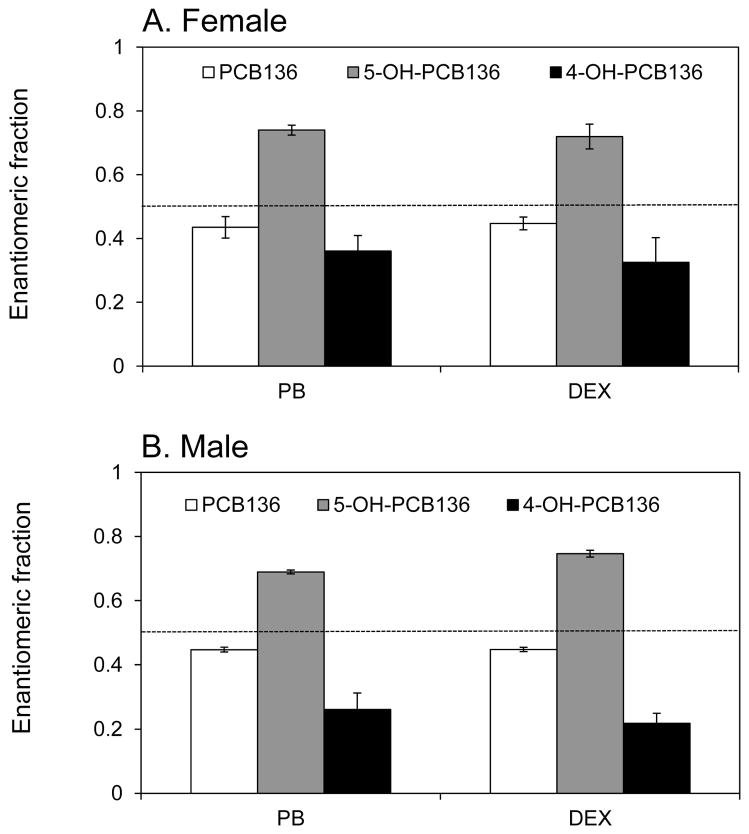Figure 7.
Enantiomeric enrichment of PCB 136 and its hydroxylated metabolites in rat liver tissue slices from (A) female and (B) male rats. The enantiomeric fraction (EF) of PCB 136 in liver slices from PB- or DEX-treated rats showed a slight enrichment of (−)-PCB 136. The second eluting atropisomer of 5-OH-PCB 136, which is formed from (+)-PCB 136, was enriched. In contrast, the first eluting atropisomer of 4-OH-PCB 136, which is a metabolite of (−)-PCB 136, was enriched. No statistically significant differences in EF values between treatment groups or sexes were observed by ANOVA with Tukey multiple comparisons (SAS software). Data are presented as the mean ± SD (n=3). The dotted line represents the EF value of the racemic PCB 136 in which the liver slices were incubated (0.498 ± 0.005; n = 12).

